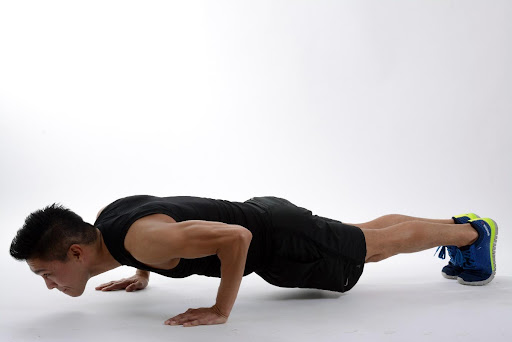There comes a point in our consistent workout routines where we yearn to amp up our fitness game and transcend our current physical boundaries. The familiar exercises and routines that once felt challenging now call out for an added layer of intensity to break through plateaus. Despite our collective desire to extract the utmost value from each workout, the outcomes occasionally fall short of our expectations.
If you find yourself in a similar situation, it’s time to bring your fitness routine to the next level and maximize your body’s potential! Improving your workout and producing effective results don’t always require making major changes to your exercise routines. With some simple yet smart strategies, you can make the most out of your existing workout routines and improve outcomes. Continue reading as we unveil a list of effective tips to improve your workout and wring out every ounce of benefit from each session.
Table of Contents
1.Steer Clear of Muscle or Tissue Damage and Injuries
Your ability to enhance your strength and improve your workouts remains contingent upon the steady support of your muscles and bones. You may be too tempted to add more weights to your workouts or increase more miles to your daily jogging routine, but a sudden change in workout intensity may result in muscle or tissue damage.
Muscle and tissue damage not only cause long-term physical injuries but also put a huge dent in your overall workout progress. To steer clear of any physical injuries, take synthetic peptides like TB500. The good news is that you can easily find TB500 for sale in pharmacies, fitness centers, or online peptide stores. TB500 peptides include 43 amino acids, which promote faster healing and repair of damaged tissues, muscles, and tendons.
Besides damage control, peptides can improve bone and muscle health, increase endurance, and help in quick muscle recovery after a rigorous workout. Remember, it is best to consult your physician and personal trainer before using any peptide regimen. Your physician will consider your medical history, any underlying conditions, and dietary patterns to determine the most suitable peptide for addressing your specific needs.
2.Set Realistic Goals
Making abrupt changes to your workout routines does more harm than good. Besides muscular tears, you risk throwing your body out of balance and subjecting yourself to potential overtraining. This not only jeopardizes your physical progress but reduces the impact of workouts and increases the chances of burnout.
Instead of trying to do too much too soon, focus on setting small, achievable goals and gradually increase them as you get stronger. This way, you can make small but consistent progress without feeling overwhelmed and get a continuous stream of motivation as you achieve each milestone.
3.Consume the Right Diet
Food is fuel to the body, and without the right nutrition, it’s impossible to provide the energy your body needs to power through workouts. Carbohydrates are the primary source of quick energy, so try not to skimp on them. However, instead of consuming plain carbs like sugar, refined flour, potatoes, and bananas, try to include complex carbs like whole grains, high-fiber vegetables, and legumes into your regular diet. Complex carbs are digested slowly, keeping the insulin levels lower during workouts. This ultimately helps in burning more fat and achieving leaner muscles and a toned body.
Besides carbs, proteins are a vital component that helps improve muscle mass and increase endurance. Amino acids present in proteins support muscle recovery after workouts, help reduce soreness, and promote muscle growth and repair. Introduce both plant-based and lean proteins in your diet, and if your physician suggests, use protein supplements to increase muscle mass.
4.Integrate Strength/ Resistance Training into Your Workout Routine
Strength training is an essential aspect of professional fitness programs. This training focuses on progressively building the body’s resilience and natural resistance against rigorous workouts to prevent injuries and muscle loss. Targeted resistance training also helps improve your metabolism so your body can produce enough energy to support your workouts and avoid burnout.
Your fitness trainer can help create a resistance training plan suitable to your preferences and physiological needs. The training may include compound, isolation, functional, and core exercises. These exercises target different muscle groups to ensure overall balanced muscle development. Your personal trainer may gradually increase or adjust the weight, number of sets, or repetitions to challenge your muscles to overcome resistance.
5.Stay Away from High-Fat Meals Prior to Workout
The primary purpose of workouts is to maximize the supply of oxygenated blood and nutrients to each cell in your body. However, when you consume high-fat meals even a couple of hours before your workout, it affects your body’s ability to dilate blood vessels and increase blood supply.
The adverse effect of high-fat meals in the form of both excessive calories and reduced blood supply can persist for 3-4 hours, which ultimately affects your productivity during workout sessions. This is why we strongly recommend exercising extreme caution with your dietary choices prior to a workout. Steer clear of consuming substantial quantities of fats, which includes both freshly cooked meals and packaged foods, during the four-hour window before the workout.
6.Adopt Warm-Up and Cool-Down Practices
Warm-up and cool-down practices are essential for maximizing the efficacy of your workout. Simple warm-ups help your body prepare for demanding training sessions by gradually increasing your heart rate as well as your body temperature. These exercises also increase your metabolic rate before you begin your workout to ensure that your body is producing the right amount of energy to fulfill your physical needs.
Warm-up exercises like cardio, full-body stretches, arm circles, lunges, and side lunges improve your body’s flexibility and mitigate injuries or muscle cramps during the workout.
As essential as warming up is, the cool-down phase is equally important. After pushing your body through a workout, it’s important to gradually bring your heart rate back to normal. A proper cool-down also curbs the risk of muscle tightness, soreness, or dizziness that may occur if you end your workout abruptly.
Try cool-down exercises like a static stretch, cat-cow stretch, hamstring stretch, light cardio, child’s pose, standing quad stretch, seated twist, and standing forward bend to help your body gradually transition from intense activity to a resting state.
Remember that cooling down doesn’t have to be time-consuming. A 5-10 minute session of these stretches and relaxation techniques can effectively reduce post-workout muscle tension.
Final Thoughts
Incorporating the above six expert tips into your workout routine can undoubtedly help you achieve exceptional results and surpass your goals. You can also try using smart tools like fitness apps to monitor your performance and get real-time feedback.
Remember that consistency remains the cornerstone of progress. While quick fixes and instant results may seem tempting, it’s the dedication to a sustainable, long-term approach that truly yields lasting transformations. Your fitness journey is a life-long process, and each step you take today is a stride toward a healthier, stronger, and more vibrant future.





